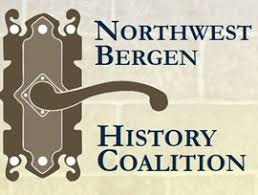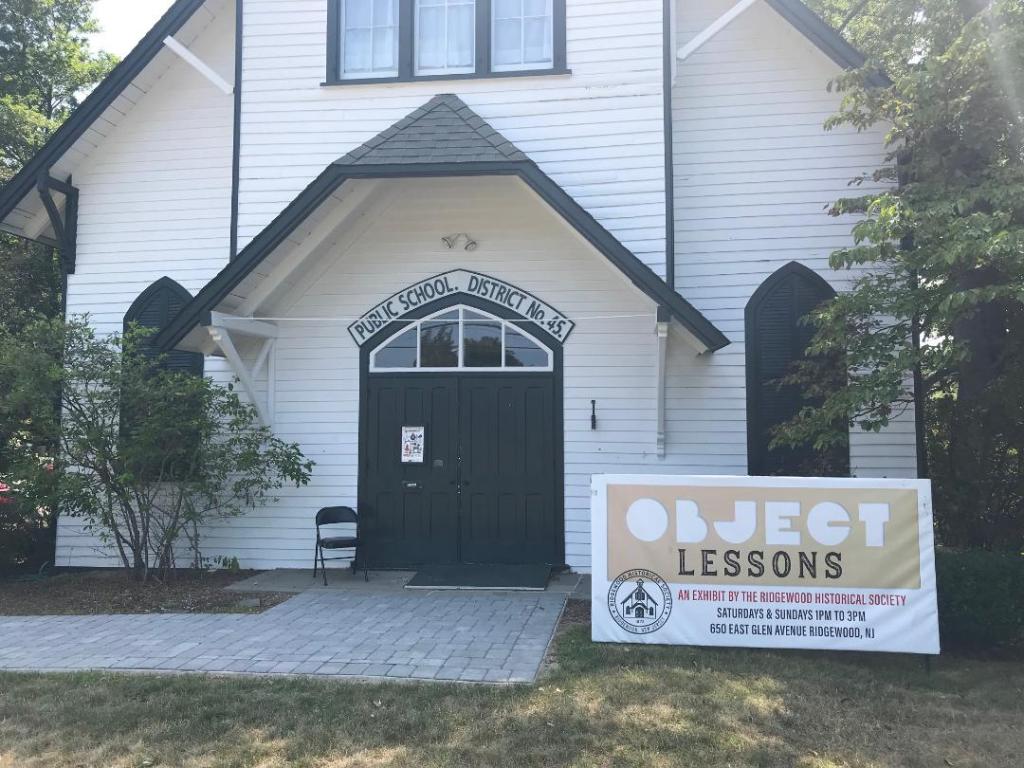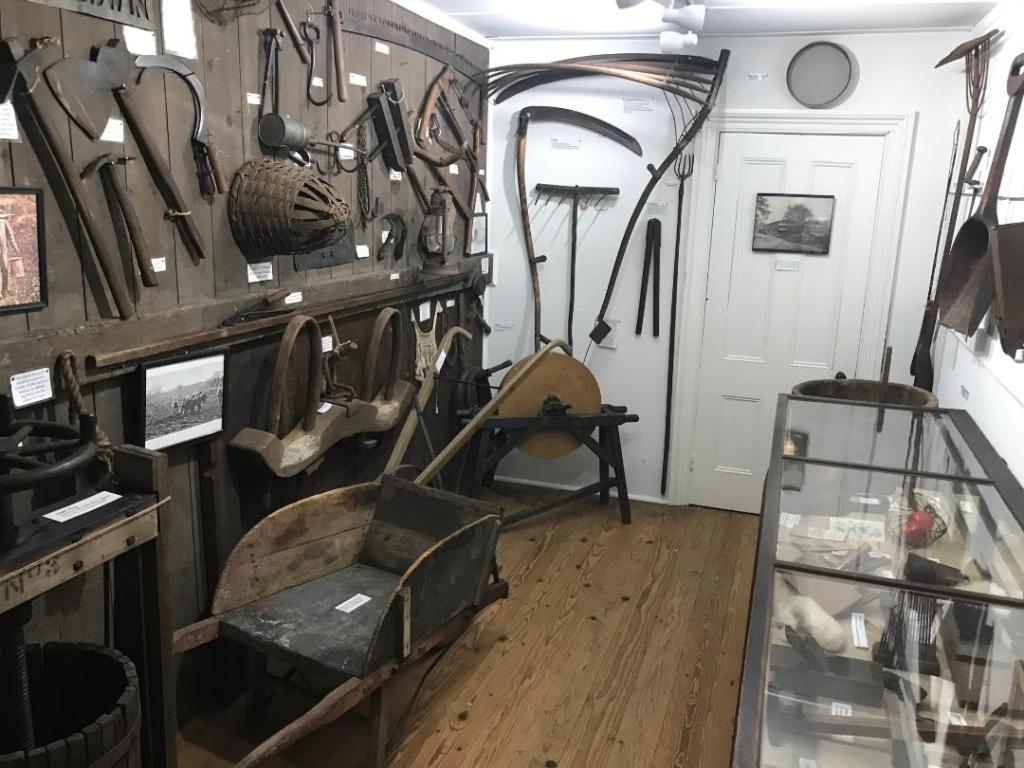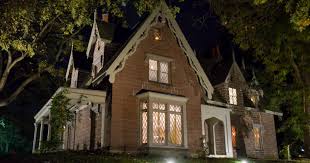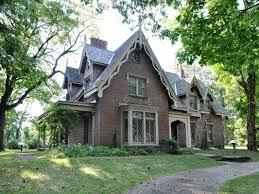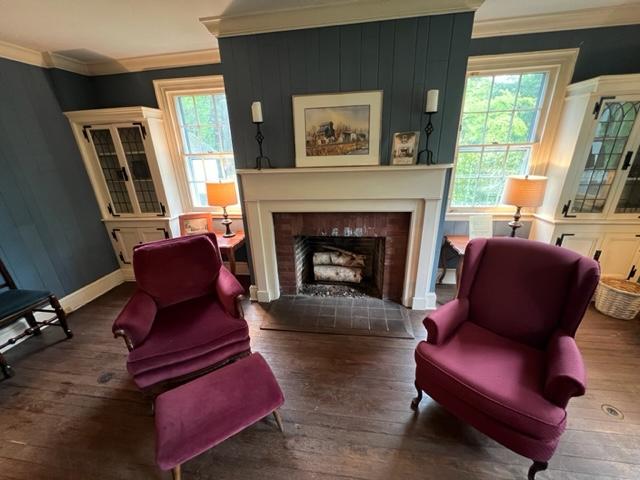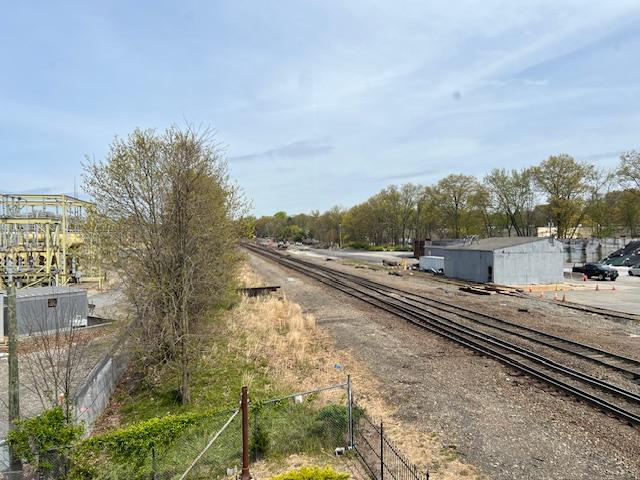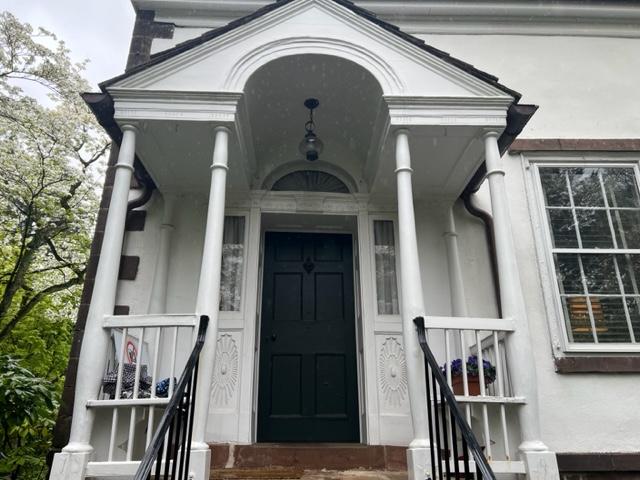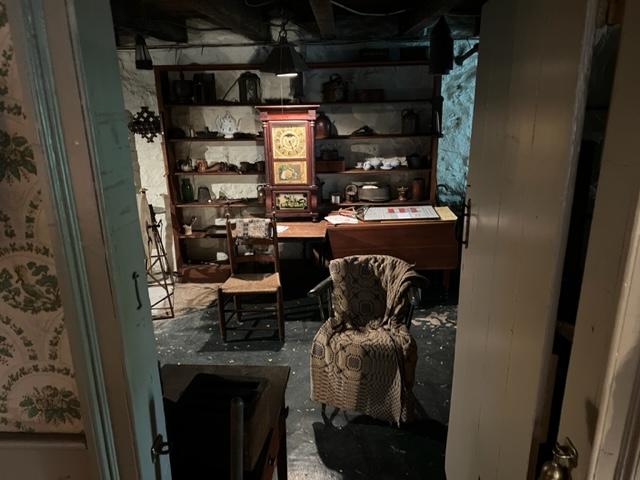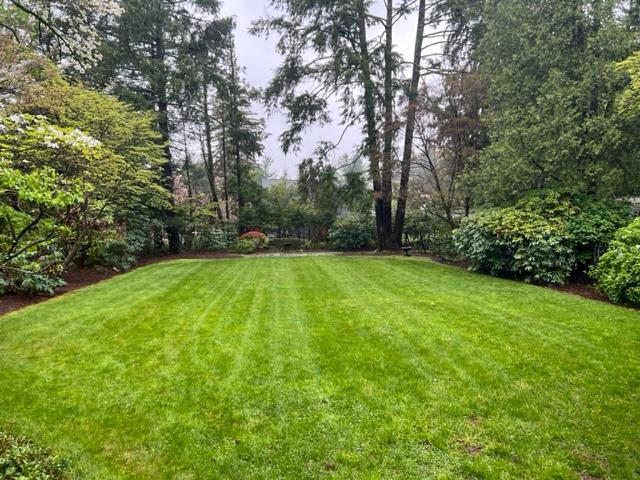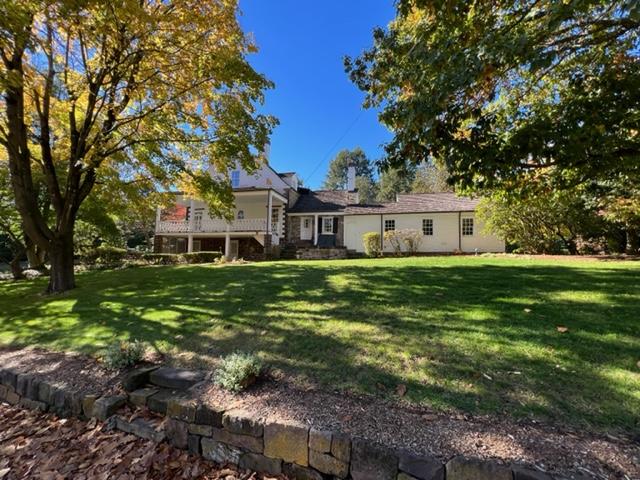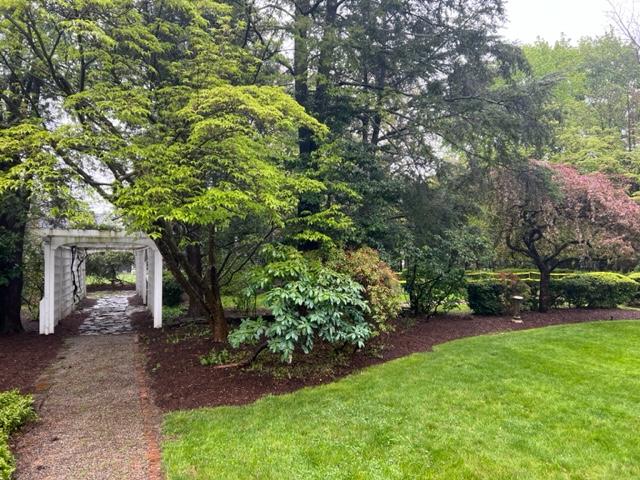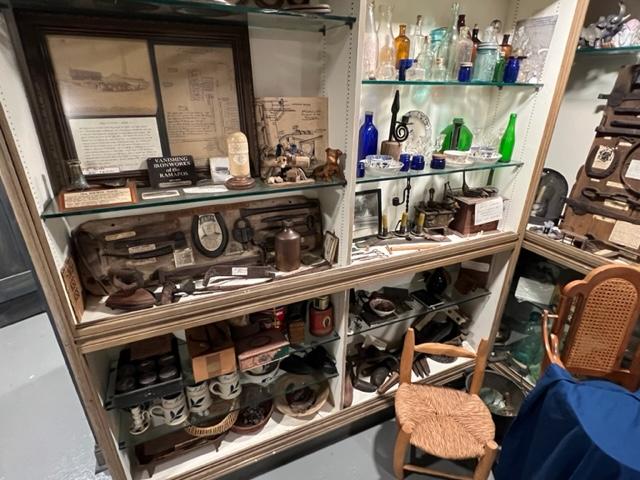I put “MywalkinManhattan” on hold for a few days as the local activities in New Jersey started to take up my time. There is so much to see and do as the weather is getting warmer.
The Northwest Bergen History Coalition every year gives people the opportunity to visit almost a dozen different historical sites in the upper part of Bergen County, NJ and take the time to tour and explore all the sites with the help of trained docents and volunteers who take immense pride in showing off their site all for the low price of $10.00 ($15.00 the day of the event). Be prepared to drive though because all the sites can be a distance from one another. Also, have a a game plan because there is no way you can see everything in one day. You will only have from 10:00am-4:00pm so plan to visit the remaining sites at another time.
This year’s theme was “How Immigration & the Railroad Shaped our Towns”, so all the exhibits were on the immigration of the area and how it shaped the individual town’s population.
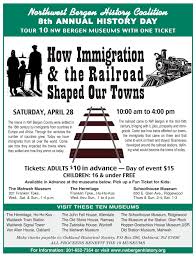
http://www.nwbergenhistory.org/
“The towns in Northwest Bergen County were settled in the 18th Century by immigrants from countries in Europe and Africa. Through the centuries the number of countries grew. Today, we have been enriched by immigrants from all over the world. The railroad came to Northwest Bergen in the mid-19th century, bringing with it jobs, prosperity and immigrants. Come see how immigrants and the railroad helped to define what would become our modern towns of today.” was the prospective of the days event.
Since I had toured most of the historic homes and museums to the south of the region, I planned my day to the northern part of the county. I bought my ticket way in advance at the Ridgewood Schoolhouse Museum (featured on my blog, “VisitingaMuseum@Wordpress.com and reviewed on TripAdvisor) when I was viewing the “Thread of Life” exhibition, which you should not miss that is showing through December of 2018. It explores life of the era’s family life through clothing.
In 2018, I planned an early morning and started my Saturday at the Majestic Diner at 1045 Route 17 South in Ramsey, NJ. This way I would be close to my first site, The Old Stone House in Ramsey, NJ. The food at the Majestic Diner I would highly recommend because I really enjoyed my breakfast there.
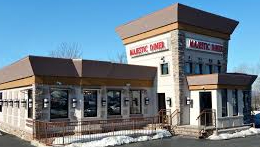
The Majestic Diner at 1045 Route 17 South
My review on TripAdvisor:
The diner does all their baking on premise and I had one of their homemade ‘Pop-Tarts’ ($3.75) to start the meal. These freshly baked pastries resemble their commercial counterparts. The outside was a flaky pastry crust with a thick white icing and a powdering of cinnamon and the inside was loaded with a thick layer of a cinnamon mixture. Decadent yes but well worth it. You have to try this version of the sweet treat.

Don’t miss their freshly baked ‘Pop-Tarts”
Breakfast itself match in creativity and quality. I ordered the Brioche French Toast with a side of homemade sausage. The one thing I liked about the Majestic Diner is that the portion sizes are not huge and over-whelming. It was just the right amount for breakfast. The French Toast was made out of brioche and it was perfect (See review on TripAdvisor).
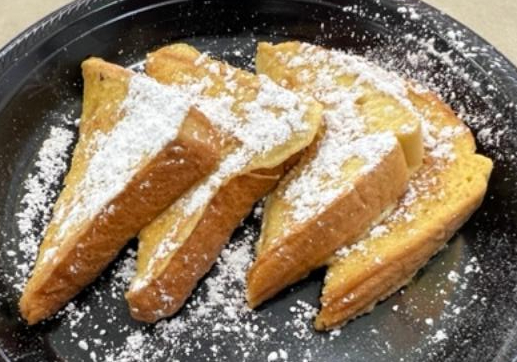
Their Brioche French Toast is excellent
They cooked it with a crisp outside and soft inside. As I was eating, I saw the omelettes going by and that was for another time. What was nice about breakfast was that it kept me content for the rest of the afternoon. There would be a lot of running around.
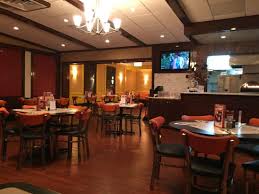
The Majestic Diner is a nice place to start your day of touring Bergen County
In 2023, time was of the essence with graduate studies and getting papers graded for work that I ate at home and planned to eat lunch at the end of the day of touring. I decided again to start the day at the Ridgewood Schoolhouse Museum and buy my ticket there. It was a really gloomy day and was cloudy with a few drops here and there during the day.
My first stop was at The Old Stone House at 538 Island Road in Ramsey, NJ (See review on VisitingaMuseum@Wordpress.com). This obscure little Dutch home sits on a bend on a hill hidden by trees off a very busy section of Route 17 South and by looking at it, you never would have guessed that it was once home to a 300 acre farm. This is the oldest building in Ramsey and was built from a combination of rubble stone, clay mortar, chopped straw and hog’s hair. The home dates back to 1740 and is run by the Ramsey Historical Society (RHS).
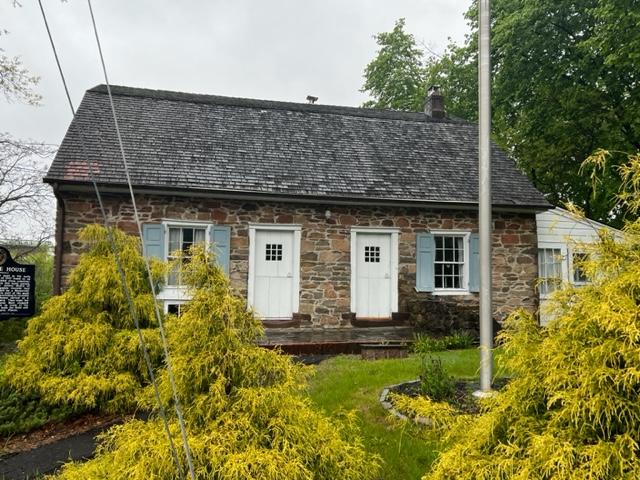
The Old Stone House at 538 Island Road
The house is credited to being built by members of the Westervelt family for brothers Uriah and Ruloff Westervelt, who leased the land in 1744. There is a feeling that there had been a house on the property at the time they leased the land. The land had been part of the Ramapough Tract for Proprietors. Other members of the Westervelt family are though to have had influence in the building of the house as well maybe back earlier (RHS).
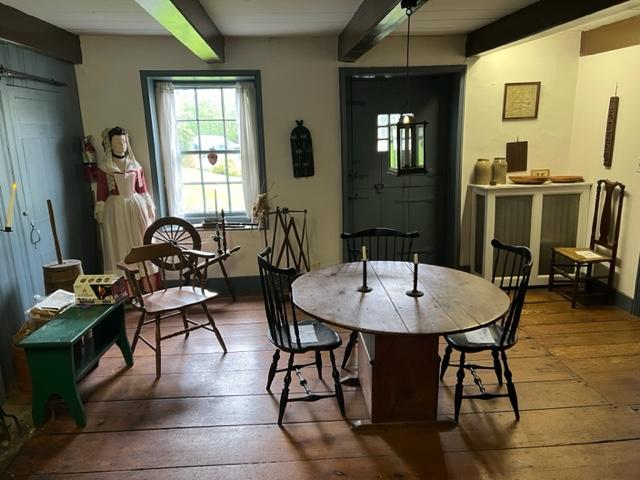
The Old Stone House kitchen
The Ramapough tract situated between the Ramapo Mountains and Saddle River was purchased from the Indians on November 18,1709 and acknowledged by the Indians at Tappan before Cornelius Harring, the Justice of the Peace (RHS).
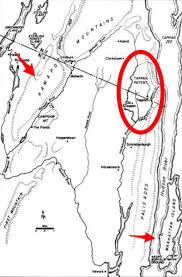
The Ramapough Tract
The house had been through many owners since and the land around it diminished over time with each owner. In 1950, the building of Route 17 South, made the lot even smaller and destroyed the spring and stream that were once part of the land around the house. Both the Schweizer family and the Labosky families, who were the last two owners of the house, which the Labosky family sold to the state in 1955, operated an antique shop that is now part of the house that faces Route 17 (RHS).
The house is furnished in period furniture and the barn outside is stocked with all sorts of equipment for early Dutch farming from the era. When you tour the house with the historians, they will point out where the fireplaces once were and the original wooden floors that line the house. Upstairs where the bedrooms once were are both Children’s displays of an old schoolhouse and a toy exhibition. In the downstairs area, there are two displays to the War Years and the old antique shop is set up like a general store. The sites next big fundraiser will be the Sinterklaas event in December for a Dutch Christmas.
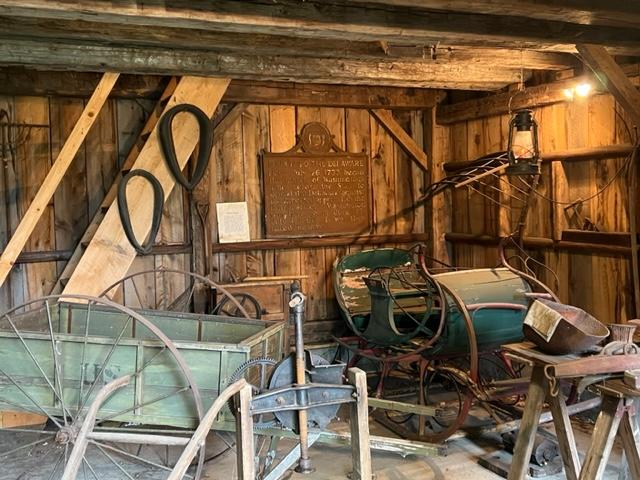
Old Stone House Barn on the inside
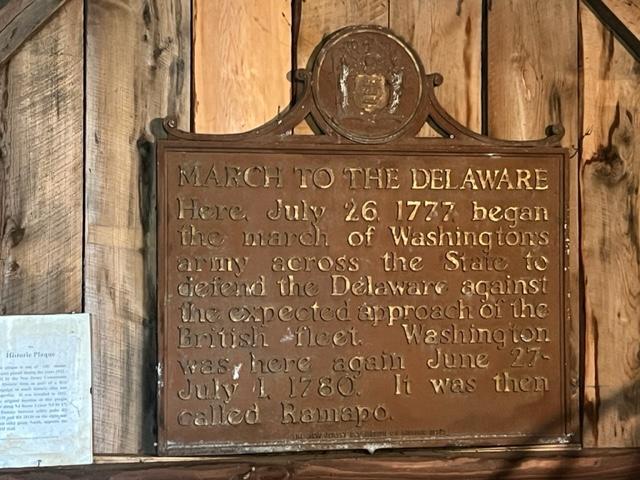
Old Stone House marker
My second stop of the historical tour was the Hopper-Goetschius House and Museum at 363 East Saddle River Road in Upper Saddle River, NJ, run by the Upper Saddle River Historical Society (USRHS). This historic home dates back to 1739 for the original part of the house, which has since been added onto three more times and still kept its historic look even into the 1980’s when the last resident moved out.
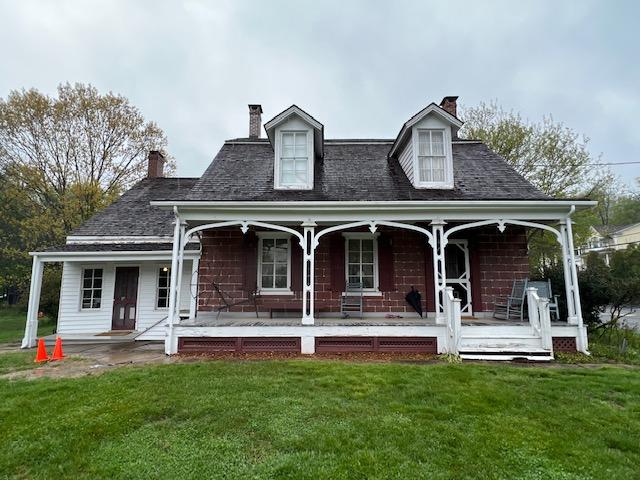
Hopper-Goetschius House & Garden at 363 East Saddle River Road
https://www.usrhistoricalsociety.org/
https://en.wikipedia.org/wiki/Hopper-Goetschius_House
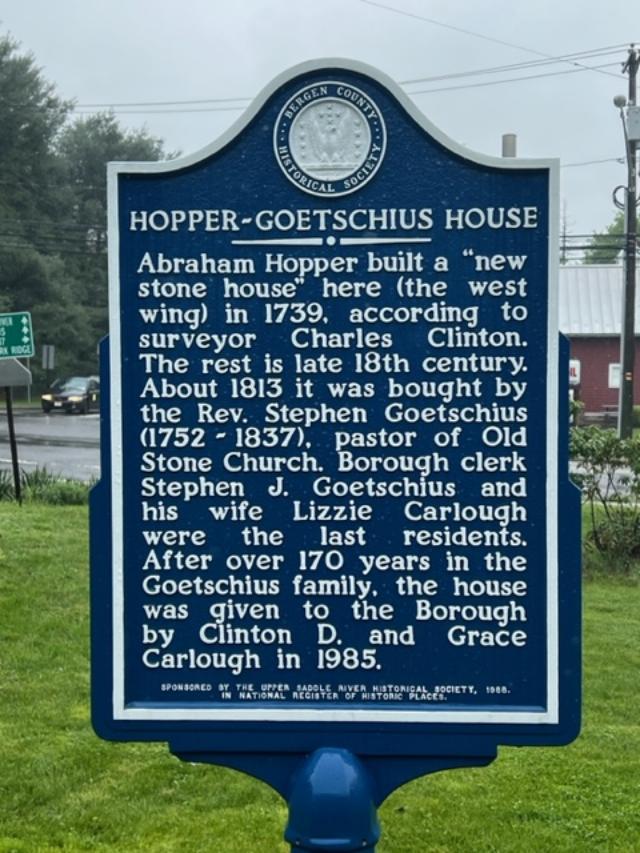
The historic marker
The property houses several buildings that were part of the original house like the outhouse, out kitchen and beehive oven. Other historic buildings that were threatened with being knocked down by developers have since been resembled and brought the property that include a woodshed, a tenant house, the Ramsey Sayer House, a Dutch barn, the Van Riper-Tice Barn and a working blacksmith shop. That part of the property toward the back part of the farmhouse looks like a mini-village and volunteers were working each of the buildings when I was there.
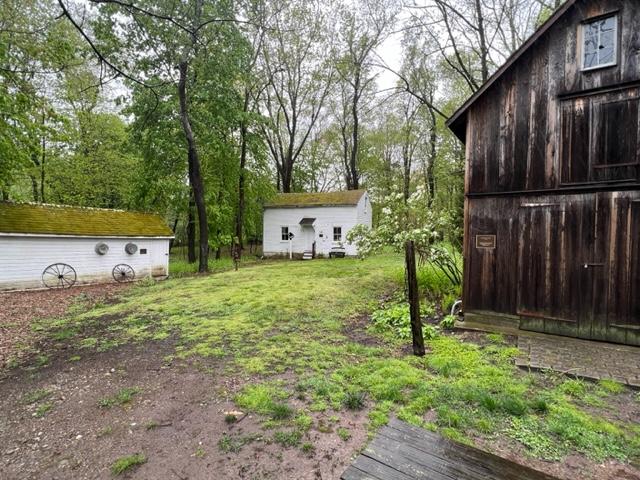
The buildings on the ground of the Upper Saddle River Historical Society
The Hopper-Goetschius House on the corner of Lake Street and East Saddle River Road dates back to 1739. Built by the Hopper family, it is the oldest remaining house in Upper Saddle River, NJ. The Saddle River Historical Society knew it existed in 1739 because it was recorded in surveyor Charles Clinton’s journal and possibly it is older. It was also marked as the home of Gerrit Hoppa on a rough sheepskin map made about 1713. The Hoppers farmed the land and had a lot of it. The property extended from the Saddle River up the hill almost to Montvale, NJ and up to the East Road in Upper Saddle River (USRHS).
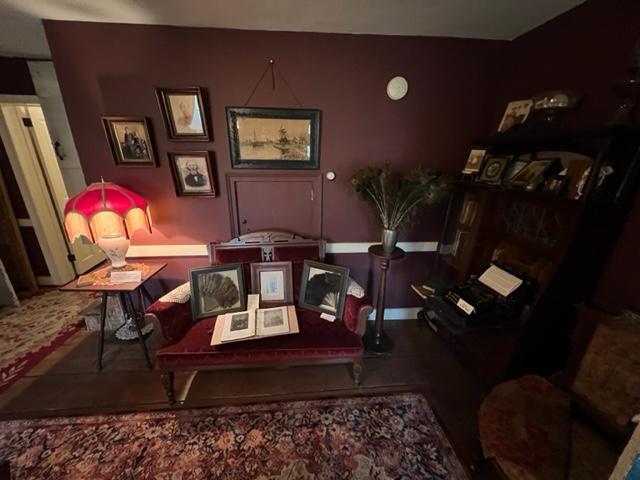
The Hopper House Living Room
The house underwent several changes in the mid-1800’s. The large central chimney with back to back fireplaces was removed. Probably with more modern forms of heating available, such as wooden stoves, the fireplace seemed a bit old-fashioned and the owners took it out. They wanted to use the entrance hall as a room, so the stairway along the east wall was removed and a central stairway added where the fireplaces had once been. The dormers were added in the Victorian era (USRHS). Don’t miss the secret stairs in the kitchen that lead to the old second floor which houses a few bedrooms. It is one of the unique features of the house.

The Hopper House upstairs bedroom
In 1814, the house became the home of the Reverend Stephen Goetschius of the Old Stone Church. It remained in the Goetschius family for a century and a half, always a place of central importance in town as Stephen Goetschius, the great-great grandson of the Reverend Stephen, served as the borough clerk for over 40 years and conducted his town business from the east room of the house (USRHS).

The Hopper House kitchen
The house was without running water until Stephen’s death in 1962. Until improvements were made at that time, Stephen’s wife, Lizzie, carried water from the well for washing, cooking and shoveled coal for heat (USRHS).
In 1985, the Hopper-Goetschius House was presented to the Borough of Upper Saddle River by Clinton and Gracie Carlough. Lizzie Goetschius, the last resident of the house was Clint Carlough’s aunt. The house today serves as a museum, run by the Upper Saddle River Historical Society (USRHS) and offers the public historically related events through out the year (USRHS). Check out their website, http://www.usrhistoricalsociety.org for special events and check out their Annual Harvest Festival in October for a day of fun.
I double backed around the county to the Mahwah Museum at 201 Franklin Turnpike in Mahwah, NJ and the sister museum, The Old Station Museum at 171 Old Station Lane just south of the main museum. What I like about these museums is that it does not take long to tour them and they sponsor interesting exhibitions that feature local history that do not tax you with lengthy displays and loads of reading. They keep everything interesting, factual and get to the point.
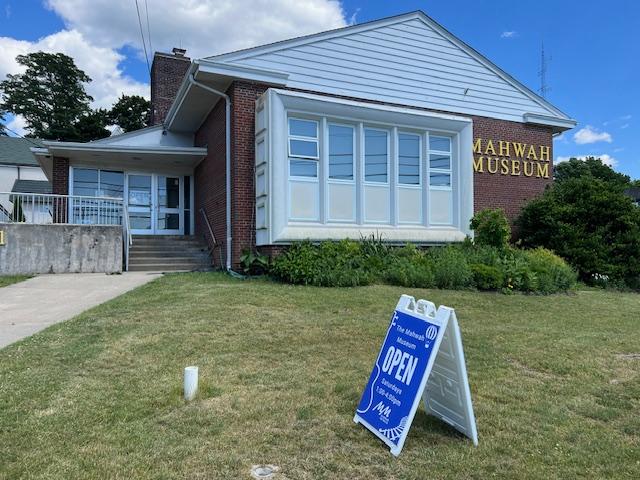
Mahwah Museum at 201 Franklin Turnpike
Having been to the Mahwah Museum earlier that month, I wanted to concentrate on The Old Station Museum. This historic train station was built in 1871 and was used for years until the modern station was built. Behind the building, there is a 1929 Erie Line Caboose that you can walk through that shows the life on the railroad and the use of the caboose on a railroad.
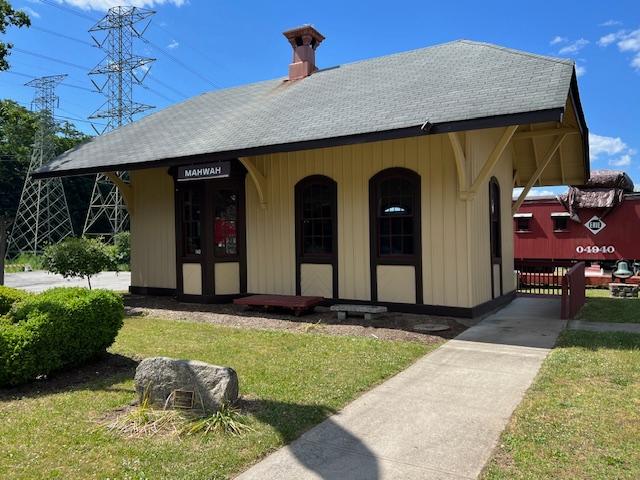
The Old Station Museum at 171 Old Station Lane in Mahwah, NJ
The museum has a interesting collection of items from the Pullman era that includes china and menus. There is a collection of trains and interesting items including maps from the era when Mahwah was major point of the railroad in the area.
The next stop on my journey as I drove south through Bergen County was the Waldwick Signal Tower at 1 Bohnert Place in Waldwick, NJ and the sister museum of the Waldwick Museum of Local History at 4 Hewson Avenue in Waldwick, NJ right by the current train station. These are part of the Waldwick Historical Society (WHS).

The Waldwick Signal Tower at 1 Bohnert Place
https://en.wikipedia.org/wiki/Erie_Railroad_Signal_Tower,_Waldwick_Yard
The Erie Railroad Interlocking Tower “WC” was built in 1890 by the New York Lake Erie and Western Railroad the tower in on the National Register of Historic Places. It is a symbol of the overall impact of the railroad industry on the Waldwick area. The tower is constructed in a Queen Anne style and other than a few minor maintenance shortcuts, the tower looks as it did when constructed nearly 130 years ago (WHS).
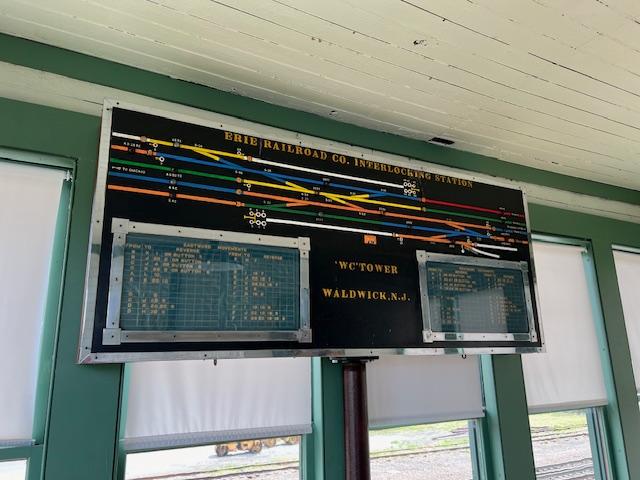
The train sign
The tower still controlled traffic but as the railroads modernized with radio communications, automatic block control and other labor saving ideas the need for the number of towers on the line was reduced until 1986, when most of the towers outside major hub such as Jersey City were closed. During the last few decades, the tower was only manned during the day (WHS).
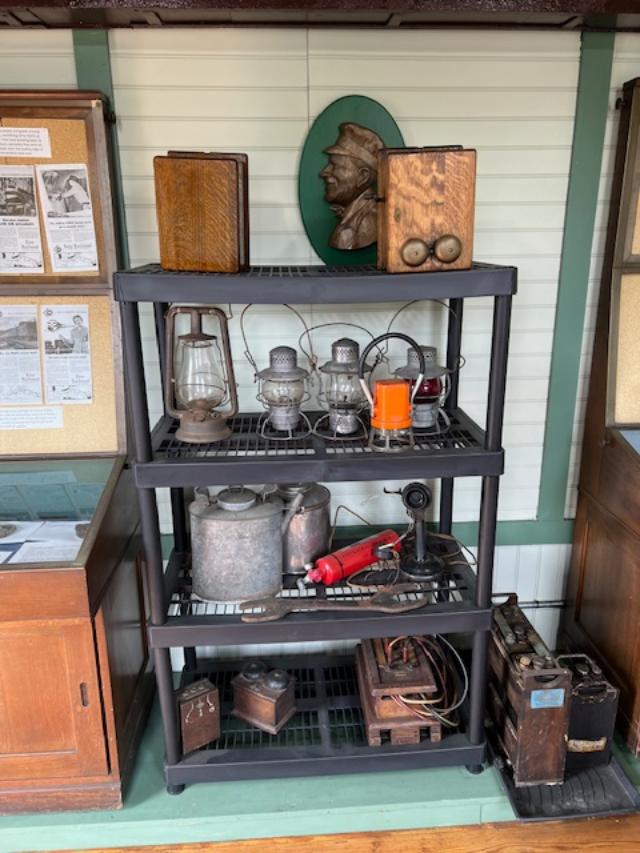
Waldwick Signal Tower light display
It is believed that this is the last standing tower of six built to this design. The two closest known examples in the area were in Ramsey, NJ and Suffern, NY, both having been torn down. The tower is named in honor of Harvey Springstead, one of the most famous engineers on the New York Division of the Erie from 1910 until 1929 and a key citizen of Waldwick (WHS).
The downstairs houses a small display of railroad deeds from the various railroads that used to operate in this part of Bergen County and the upstairs has a collection of railroad artifacts as well as pictures of the renovation of the tower.
I did a circle around the tracks and stopped at the Waldwick Museum of Local History at 4 Hewson Avenue which is located in the restored 1887 Waldwick Railroad and opened in 2016. It is part of the Waldwick Community Alliance.
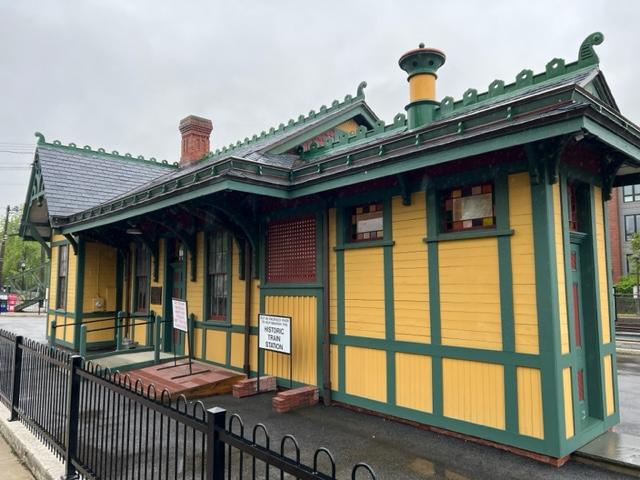
The Waldwick Museum 4 Hewson Street
https://waldwickcommunityalliance.com/waldwick-railroad-museum
The Society was started by member Doug Cowie in 1977 with the purpose to lobby for the placement of the train station on the National Register of Historic Places in order to save it. With the formation of the Society, the station was placed on the registry.
It is noted that these railroad lines are what brought the new population of immigrants to upper Bergen County at the turn of the last century and why these towns had a building boom before and after World War II.
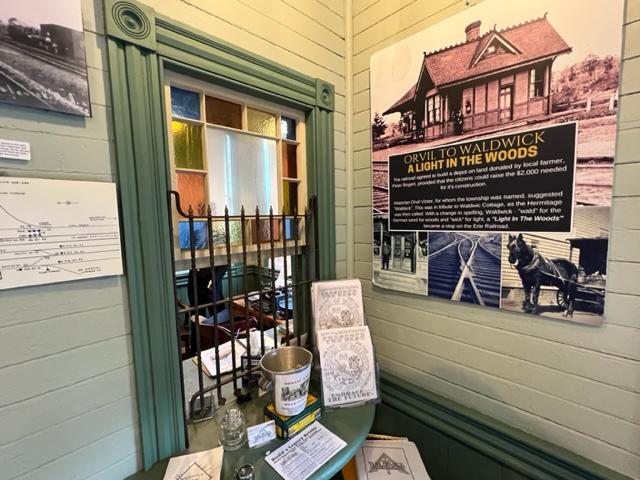
The Train booth display in the museum
The museum has an interesting exhibition on the immigration to the area due to railroad transportation. There are historical items as furniture and clothing and train memorabilia. The history of the rails is well represented at the museum. Members of the museum were on hand to give a personal tour.
My last historical place I visited was The Museum at the Station at 176 Rock Road in Glen Rock. The museum is managed by the Glen Rock Historical Society and is housed inside the original 1905 Erie Main Line Train Station on Rock Road.
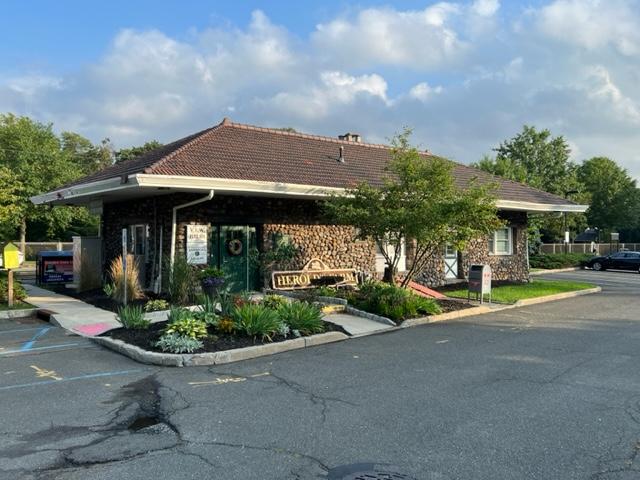
Museum at the Station at Glen Rock, NJ
https://www.glenrockhistory.org/copy-of-about
The Museum showcases items from Glen Rock’s past with displays that change periodically as well as permanent exhibits on the Erie Railroad and artifacts from Glen Rock’s farming history (BCHS).
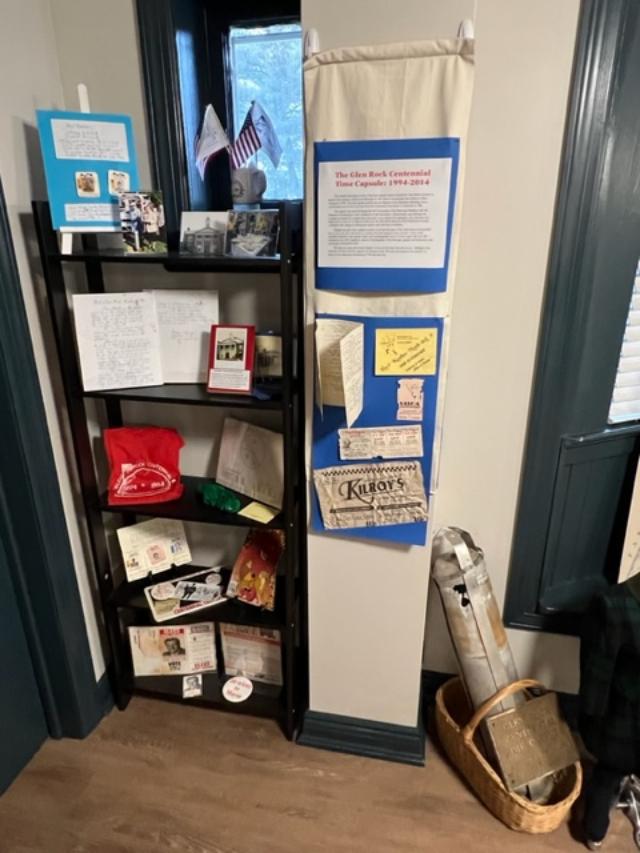
The town time capsule
When I visited it was at the end of the day so I was the ladies last guest. The members of the Society took me around the museum which has a interesting exhibition on immigration and how it affected Glen Rock and how it grew as a town. Many of the items are historic family items donated member of the Glen Rock community including clothing and furniture. They had the most interesting Victrola with the original records and period clothing. One resident donated an interesting collection of antique toys including many trains.
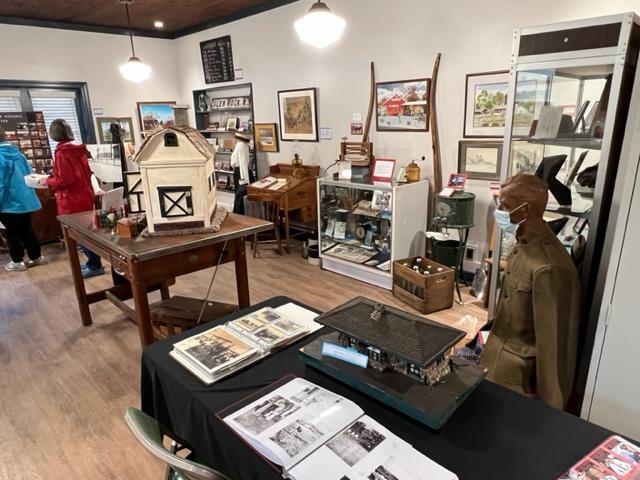
The Museum’s main gallery
While in Glen Rock, I visited the famous Glen ‘Rock’, located right off the downtown at the intersection of Rock Road and Doremus Avenue, which the town is named. The Rock was pulled to the town by the last Ice Age and was a meeting place and marker for the Lenape Indians when they lived in the area. In the Colonial era, it was a meeting place for residents. There have been many legends about the power of the Rock.
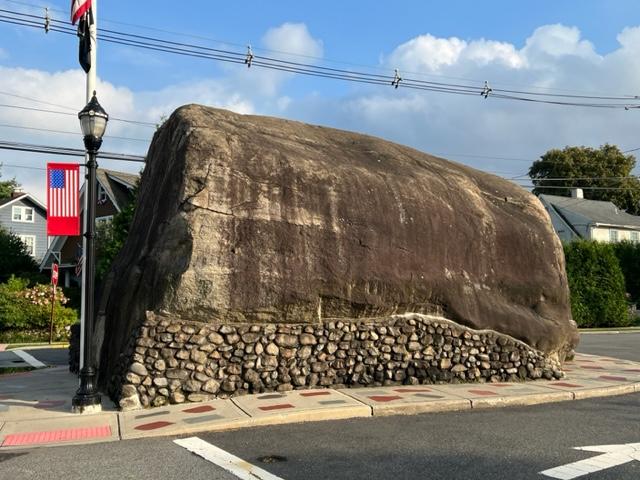
Glen Rock ‘Rock’ just off Downtown Glen Rock, NJ
https://en.wikipedia.org/wiki/Glen_Rock,_New_Jersey
In 2018, I went to dinner that night was a revisit to Mahwah to have pizza at Kinchley’s Tavern at 586 North Franklin Turnpike in Ramsey, NJ, for one of their thin crusted pizzas (See review on TripAdvisor). This is one of the oldest restaurants in this part of upper Bergen County and has been on my must try list for about two years.
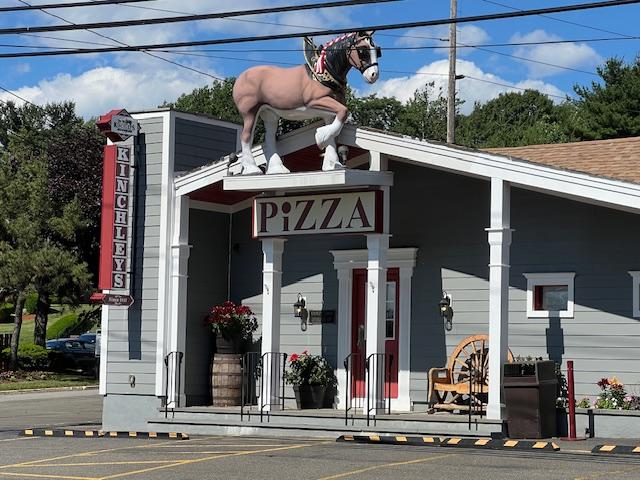
Kinchley’s Tavern at 586 Northern Franklin Turnpike
https://www.facebook.com/kinchleythincrustpizza/
My review on TripAdvisor:
First off, the place is mobbed all the time. I have heard that people swear by their pizza. It is different from the usual Neapolitan pies that I try all over Bergen County. Kinchley’s specializes in thin-crusted pizzas, more of what people would call a ‘bar pizza’. The 12 inch pizza can be easily eaten by one person if they are hungry and the sausage pizza I ordered was loaded with sweet Italian sausage. One thing Kinchley’s doesn’t do is skimp on the ingredients.

The inside of Kinchley’s is very homey
The pizza was cooked to a crisp consistency and was devoured quickly after a long day of touring. The restaurant is a great family restaurant with a good vibe. It was like going back in time to the 70’s when going out to dinner with your family was a treat and a rite of the summer. I highly recommend a visit there at least once when visiting Bergen County.

Kinchley’s Pizza is very good!
Until next year! Don’t miss this event every year in May!
Take a look at their video on the event:
The Northwest Bergen History Coalition:
http://www.nwbergenhistory.org/
https://www.facebook.com/NWBergenHistory/
Places to Visit:
(Please note that most of these historical places are only open at certain times of the year so please visit their websites)
The Old Stone House Museum
The Ramsey Historical Society
538 Island Road
Ramsey, NJ 07446
(201) 327-2655
http://www.RamseyHistorical.org
My review on TripAdvisor:
My review on VisitingaMuseum.com:
https://wordpress.com/post/visitingamuseum.com/2026
Hopper-Goetschius House Museum
Upper Saddle River Historical Society
245 Lake Street
Upper Saddle River, NJ 07458
(201) 327-8644
http://www.usrhistoricalsociety.org
My review on TripAdvisor:
My review on VisitingaMuseum.com:
https://wordpress.com/post/visitingamuseum.com/2030
The Old Station Museum
The Mahwah Museum
171 Old Station Lane
Mahwah, NJ 07430
My review on TripAdvisor:
My review on VisitingaMuseum.com:
https://wordpress.com/post/visitingamuseum.com/437
Waldwick Signal Tower
1 Bohnert Place
Waldwick, NJ 07463
wctower@optimum.net
My review on TripAdvisor:
My review on VisitingaMuseum.com:
https://wordpress.com/post/visitingamuseum.com/2019
Waldwick Museum of Local History
4 Hewson Avenue
Waldwick, NJ 07463
(201) 873-8919
My review on TripAdvisor:
My review on VisitingaMuseum.com:
https://wordpress.com/post/visitingamuseum.com/2015
The Museum at the Station
176 Rock Road
Glen Rock, NJ 07452
(201) 342-3268
http://www.GlenRockHistory.org
My review on TripAdvisor:
My review on VisitingaMuseum.com:
https://wordpress.com/post/visitingamuseum.com/2022
Places to Eat:
Majestic Diner
1045 State Route 17
Ramsey, NJ 07446
(201) 962-8750
Eatmajestic@gmail.com
Open: Sunday-Thursday 6:00am-11:00pm/Friday & Saturday 6:00am-12:00am
My review on TripAdvisor:
Kinchley’s Tavern
586 North Franklin Turnpike
Ramsey, NJ 07446
(201) 934-7777
https://www.kinchleyspizza.com/
Open: Sunday 12:00pm-11:00pm/Monday-Thursday 11:00am-12:00pm/Friday 11:00am-1:00pm/Saturday 11:00am-12:00pm
My review on TripAdvisor:


